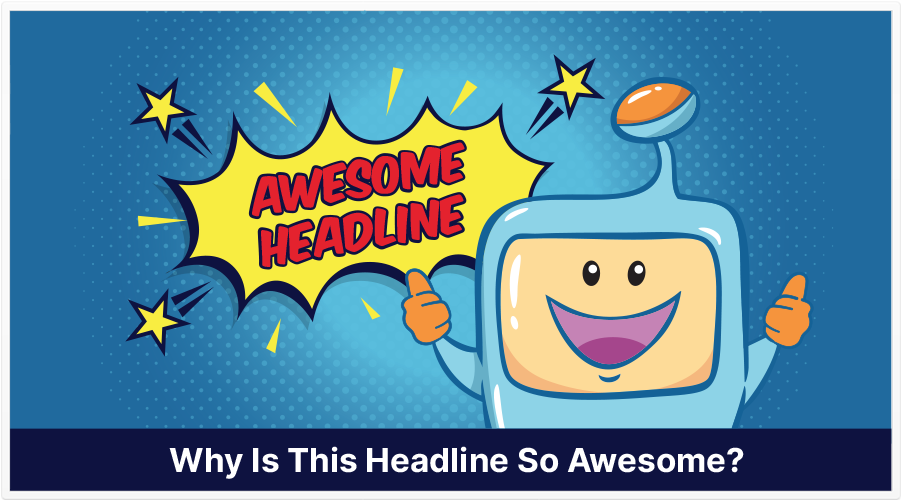
Want to learn how to write a headline for both SEO, as in a headline that search engines will love and get you ranked in search results, and a headline that will catch reader’s attention and entice them to click on your page?
A great headline that is guaranteed to have readers visiting your page and reading through your content, which in turn, would also help you get ranked higher in search engines.
You’ve come to the right place.
This article is all about how to write headlines. Learn how to write compelling headlines, create powerful headline formulas that grab attention and drive traffic to your page and site.
Say bye to the boring generic headline and start writing the best headlines that make a great first impression. drive more traffic to your page, and that would help you get higher conversion rates. Let’s get started.
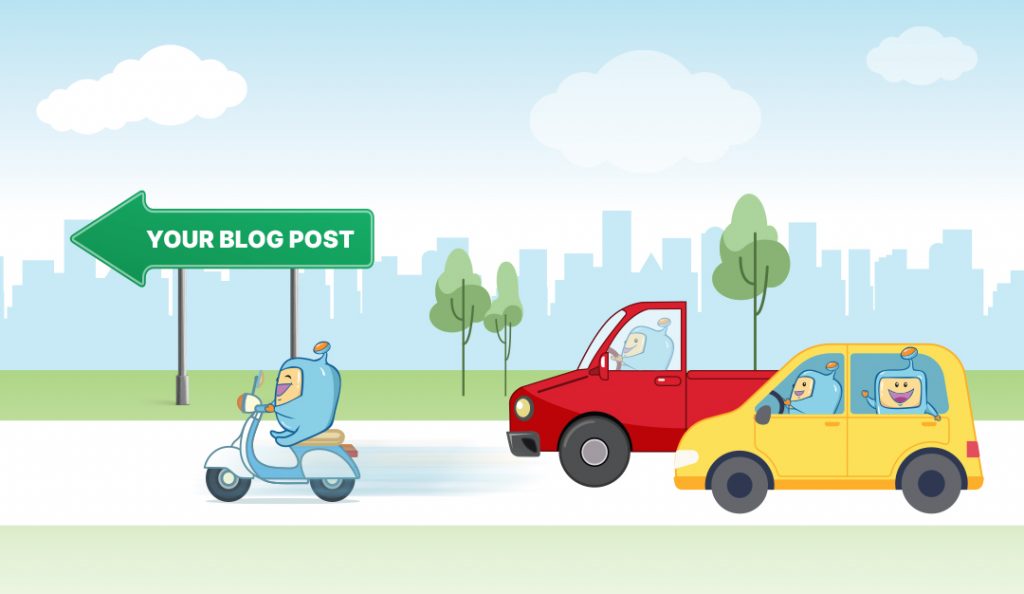
Answer this:
Because not only is it (in my opinion) a compelling headline example, it works. After you read the upcoming headline writing tips, you’ll have a clearer idea of why this works. And how writing headlines will increase your click through rates.
Within that headline is a secret that makes it work, and I know it works…because it got you to continue reading.
But before I get to headline writing tips, I need to take a few steps back.
I’m sure you know how important it is to have powerful headlines and a great blog post. You’ve probably come across the statistic that says that some copywriters spend 80% of their time to write headlines, or that if your headline does a bad job, most people won’t get past it.
Catchy headlines get clicks. It’s that simple. Just the headline is enough to get people over to your page or post.
With that, let’s begin with a question that will hopefully begin to stimulate some good headline ideas:
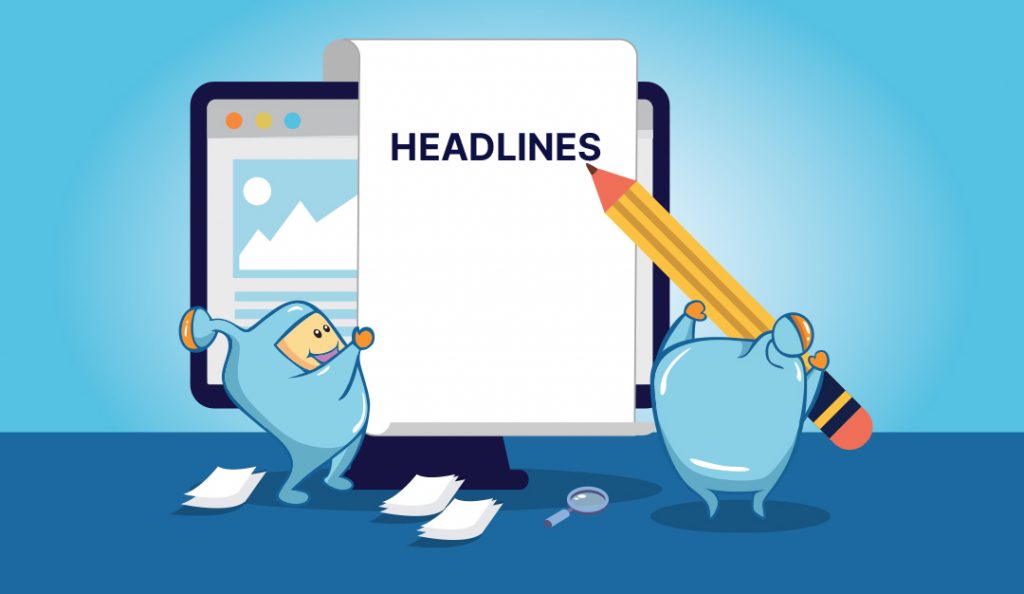
You know it when you see people’s favorite headlines: you see a headline, and it seems to pull you in. You feel the urge to read more, if only to scratch the itch of curiosity.
If you ask a number of people what makes a good blog post headline (or any headline) work, you may get a number of responses.
I bet some would stare at you blankly, then ponder.
I’ve been writing headline variations for years. You and I probably share this experience: having written a good piece of content, we’d invest quite a bit of time into our headline, because we wanted to pique the interest of potential readers.
I used to think that there were one or two key aspects of writing great headlines, but as I really ponder this, I think that, for me to give you the best answer I can, I have to say there are three aspects to a winning headline formula.
Do you absolutely need all three of these aspects?
No, I don’t think so. I’ve heard one great copywriter imply that you only need one of these three (#2 or #3 below). But, he said that the combined use of #2 and #3 will sharply increase your chances of creating a winning headline. With these you’ll be able to create your own headline templates.
These are…

A lot of people talk about headline templates and test headlines, which can be a great resource for headline formats.
If I had to sit down and try to create a headline formula, I’d consider the upcoming few examples. What’s good about these 3 key aspects is that you can create your own headline templates and create various types of headlines.

From Your Target Audience…a Single Reader
This one may seem obvious, but it’s so important that it’s worth mentioning. Why did I title the first point as I did, stating a “single reader” from an audience?
Because even though you have an audience of several (or hundreds, thousands and even millions) of people, when you share a message, you want to envision yourself writing to one person, a “single reader,” as it were.
Of course, while writing a catchy title or headline, you can call out an audience en masse: “New Site Owners…”
But just remember: you’re writing to human beings.
The other thing to keep in mind is that, even though I just spoke about writing to the individual, you should also know your audience. You should know their demographics, their psychographics, what issues and problems they have and what words they use to describe those issues. Make sure to use your target keyword.
Think back to the headline/question, Why Is This Headline So Awesome?
While it doesn’t explicitly call out an audience (ie: it doesn’t say, “Hey Writers,”) there is an implied audience: those who want to know how to create good headlines.
Sometimes, on the Internet, your audience (especially if they’re coming from Google or follow a link to your page) will self-identify themselves.

Curiosity
Curiosity is the “secret” behind the catchy headline I presented above: Why Is This Headline So Awesome?
Because you continued to read, I know that it piqued your curiosity.
It also had something implied…

Self-interest
While “Why Is This Headline So Awesome?” doesn’t explicitly feature anything of self-interest (benefit), it does imply some sort of self-interest.
It basically says, “If you continue to read, you’ll get to explore why this headline is awesome…or even better, not just explore, but have a solid answer as to exactly what is so awesome about the headline.”
It’s been said that all people do things for only one of two reasons: to move away from pain or toward pleasure. Either way, it can be thought of as self-interest (or at least self-preservation).
The same applies to headlines and subject lines.
With the 3 aspects I listed above, if you have a bit of gusto and intuition, you can create your own headline strategies.
What follows is a 10-step process that’s aimed toward the creation of SEO-oriented content. That said, the key aspects of this process apply for all non-fiction content creation.

Below, I’ve listed the 10 steps you can take to maximize your chances of coming up with great headline ideas. With these, you’ll be able to create your own headline formula.
Know Your Reader
This is where it all starts. Know as much as you need to know so that you can effectively communicate to them–not just in your headline, but throughout the body of your message.
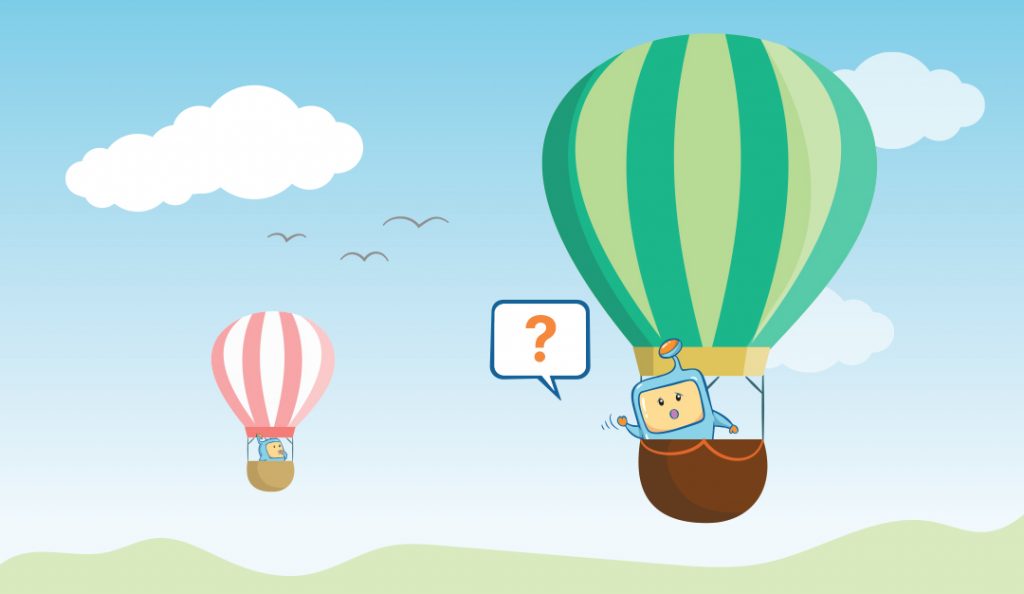
What Does Your Reader Want?
Do They Want to Avoid a Painful Experience, or Pursue a Pleasurable One? Both?
Though I didn’t use this terminology, I sort of mentioned it earlier: pain-pleasure principle. That is, people basically want to move away from pain and toward pleasure.
Actually, let me give you another tidbit: people will do more to avoid pain than to gain pleasure.
So, even if you think your visitor may want to gain (as opposed to avoid) something, see if you can push yourself to come up with an away-from idea.
For example, if you’re writing about 10 things to look for when buying an electric car, definitely keep that idea. But, you may also want to consider an article titled, 5 Mistakes Newbies Make When Buying Electric Cars.
Or, maybe even better, Buying Electric Cars in Texas: Avoid These $5000 Mistakes.
Tip: Negative headlines work. People often will want to avoid pain more than get something they want. No one wants to lose $5,000 because they didn’t know something important.
Just the headline alone will get people to click to simply avoid a pain.
Those are a couple of examples on how to write headlines. Notice how the last one:
Identifies your ideal reader, even down to the state (potential electric car buyers in Texas)
Even though the reader’s motivation is toward pleasure (they want an electric car), there’s a segment of the headline that appeals to their instinctual drive to avoid pain (the costly mistakes).
It’s under 60 characters in length (because the SERPs usually display up to the first 60 characters of the headline/title of a page).
I also could have improved that headline a bit by making it a numbered list–that is, by saying These 7 $5000 Mistakes, but I would’ve been over the 60-character limit.
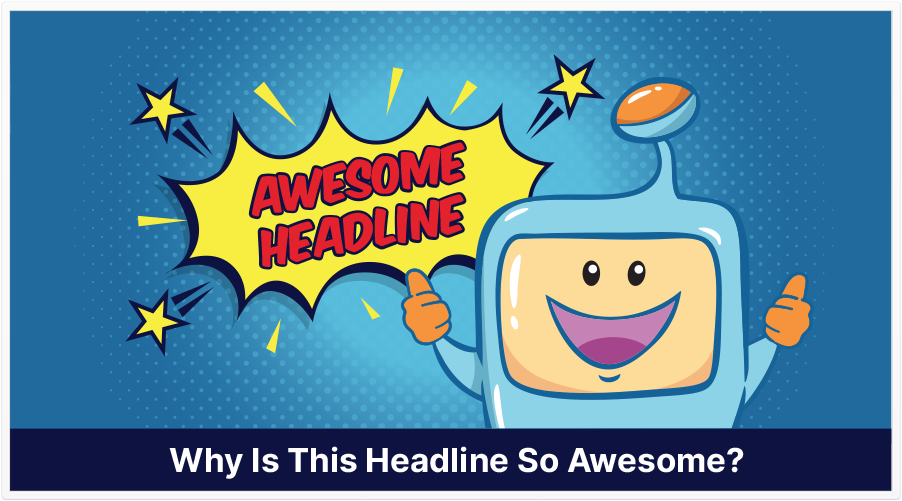
What Might They Google?
By this, I mean would they type into a search engine?
In SEO, we have a term: search intent. What someone types into a search engine says something about their intent. Their intent may indicate that they’re aware of a need or want (which matches your message).
Which search intent best matches what you have to offer?
Do Your (Keyword) Research
Generic headlines are okay, but you want to be more than just generic. You want to be specific (if possible), and that’s what this process is all about.
Because this process is geared slightly for SEO, keyword research is key, because knowing what terms readers enter will help you create a headline (or title) that has a better chance of showing up in the search results.
Ideally, you want to find specific, low-competition keywords that you can speak to and, at the same time, rank for.
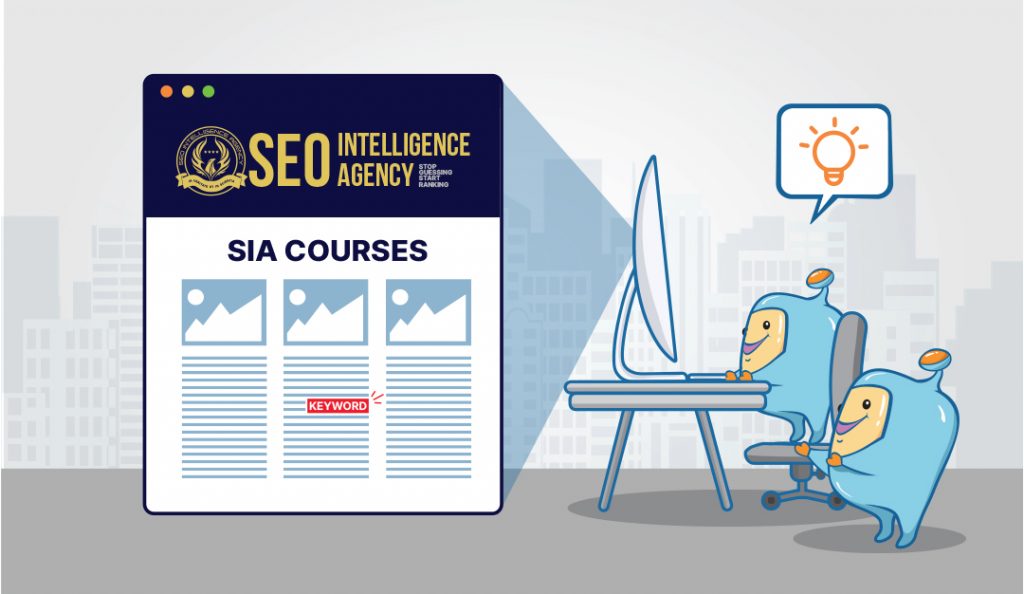
There are many keyword tools out there that provide good information. Derek Booth has a course in the S.I.A. where he teaches keyword fishing using keyword planner.
How, Exactly, Does Your Product or Service Help Them Get What They Want?
You’re probably wondering, Well…this part comes after the headline, so why do I need it now?
I understand where you’re coming from. That said, doing this process may help you stumble upon something that you can put in your headline.
Also, on a Google search results page, typical listings have a bit of text under the headline (title). This text (sometimes known as the meta description) is displayed to the reader, and usually has a limit of 120 characters.
This can be to your benefit, because if you can briefly mention how your product may help them, they may click on your listing.
Given Where They Are Now, What Can You Say to Them That Will Get Them to Stop, Notice You, and Read Your Message?
This is where the work really begins.
The previous 5 steps have prepared you for this.
Knowing about my ideal visitor, I’d ask myself, If I were a writer with an approaching deadline who had to quickly come up with great headlines, what would catch my attention?
(Does that sound oddly familiar?)
I’d think, Well, I’d want a definite process that can give me results…as quickly as possible.
Of course, that was the idea behind this article–to show you a process you can use to create effective headlines.
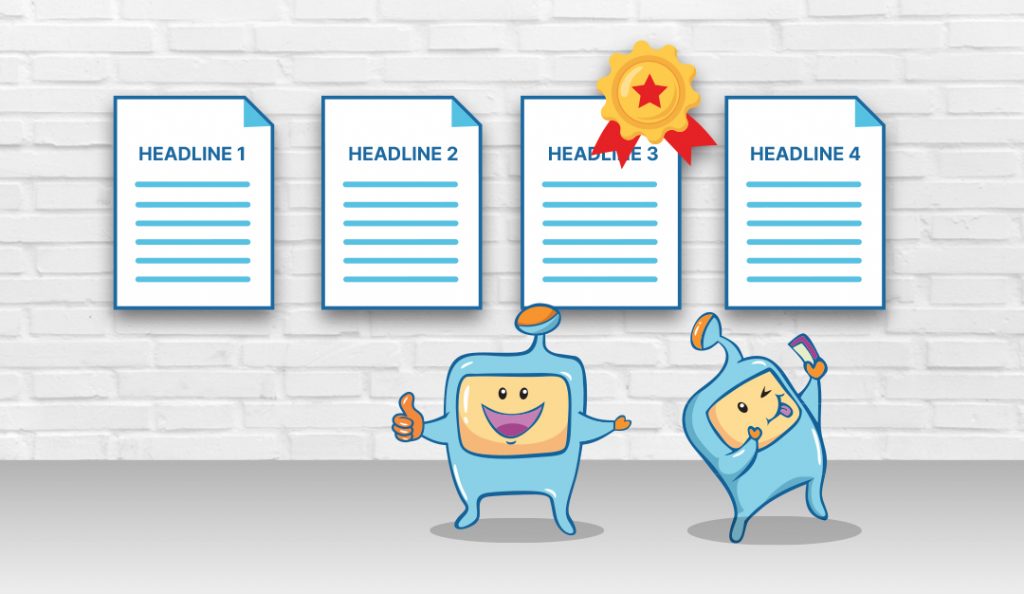
Create Multiple Headlines, Eventually Selecting The One You Think Is Best
The good thing about going through this process is that it’ll force you to write catchy headlines –or, at least ones that are better than they would have been had you not gone through this process.
That said, I find that, a lot of the time, when I write great headlines for my articles, I usually create from 3 to 7 potential headlines before I decide which one I would like to go with.
Also, you may want to do something that I did recently: asked a colleague which of 5 or 6 headlines she thought was best. (She agreed with the one I thought was best, so that was good.)
Multiple headlines are also good for split-testing, which I’ll mention below.
For some, this step is as far as you need to go. However, if you’re more curious, ambitious, or are part of a larger enterprise, then you may wish to go all the way through this process. The following headline writing tips should get you there.
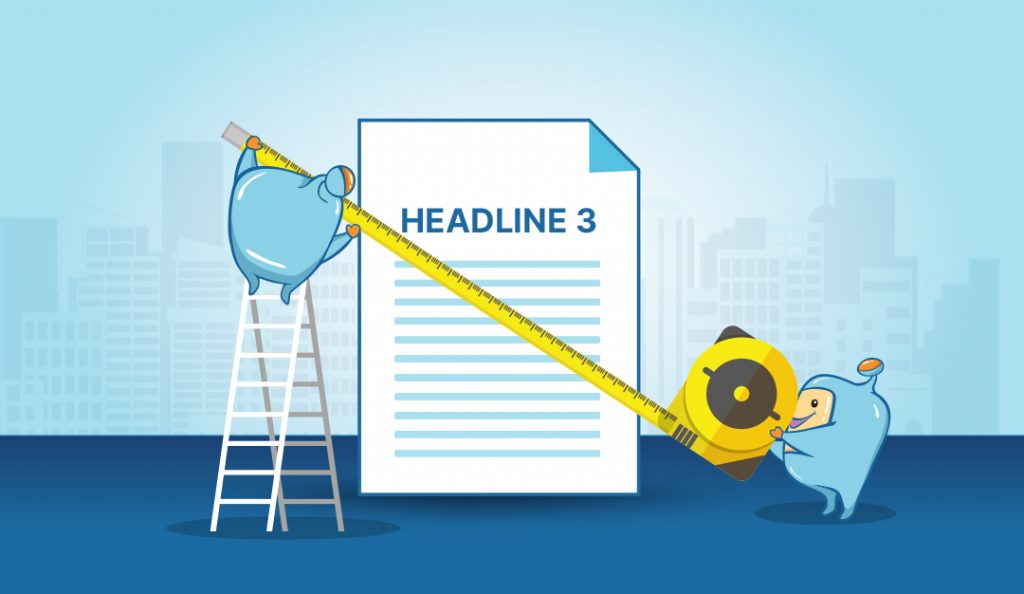
Measure Your Results
While measuring and tracking extends beyond headlines, since we know that headlines are a major determiner of clicks, it’s good to mention that here.
There are a few ways to measure the results of a headline. What first comes to my mind is using something like Google Search Console to track the click-through rate (CTR) of a given headline (page, in this case).
That said, measuring the CTR of a headline/title on a search result page is a bit involved, because you also have to account for the page’s position on the search results page.
Below, I talk about a test that we at the SEO Intelligence Agency (SIA) ran. It may be worth your while.
Consider Split-Testing
If you’re not sure what it is, A/B split-testing is where you take two identical pages, change one aspect of one of them (in this case, the headline), and run a test where each version is alternated, and after a certain number of visits, you determine which version gave you the best outcome.
In other words, you have Headline A vs Headline B. Over a certain amount of time, A and B each get a significant enough number of visits to determine one of them a clear winner. The winner becomes the headline you use.
Split-testing can be a very involved technical process, but for large corporations that have the quantities of traffic and resources to do this, the reward can be great.
Repeat
When you have a good headline, strive to create an even better one–a great one.
It’s a never-ending process that never fails to eventually create magnetic headlines.
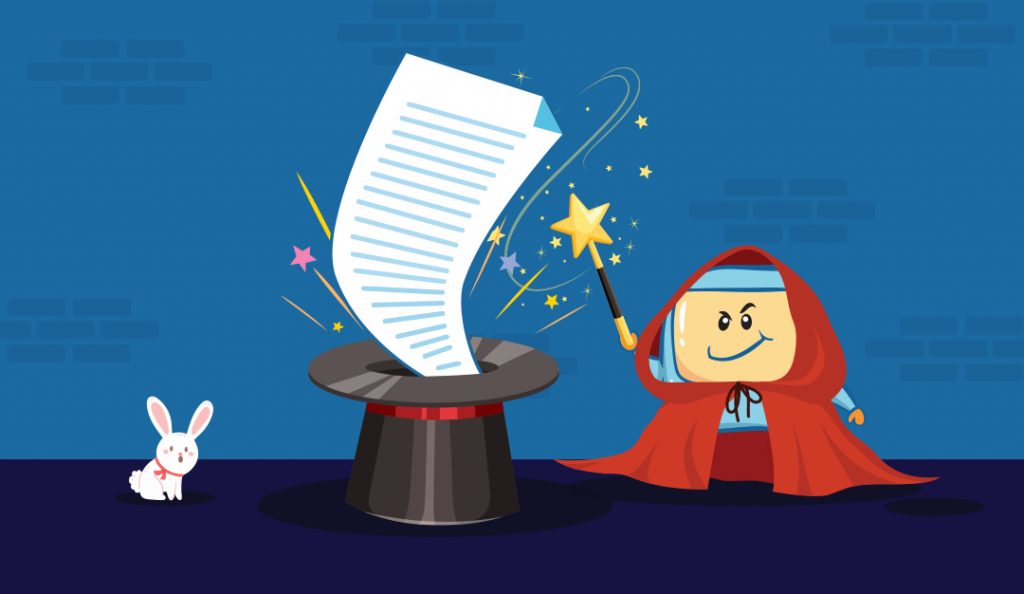
One: Read good headlines in magazines or news sites.
Two: Convert those to fit your niche or purpose.
At the SEO Intelligence Agency (SIA), we don’t blindly listen to the many SEO myths that are out there. Nope. Instead, we test things.
To learn more about how to plan headlines that might get better click-through rates, watch this video:https://www.youtube.com/embed/wqgxVeS3iTE?feature=oembed
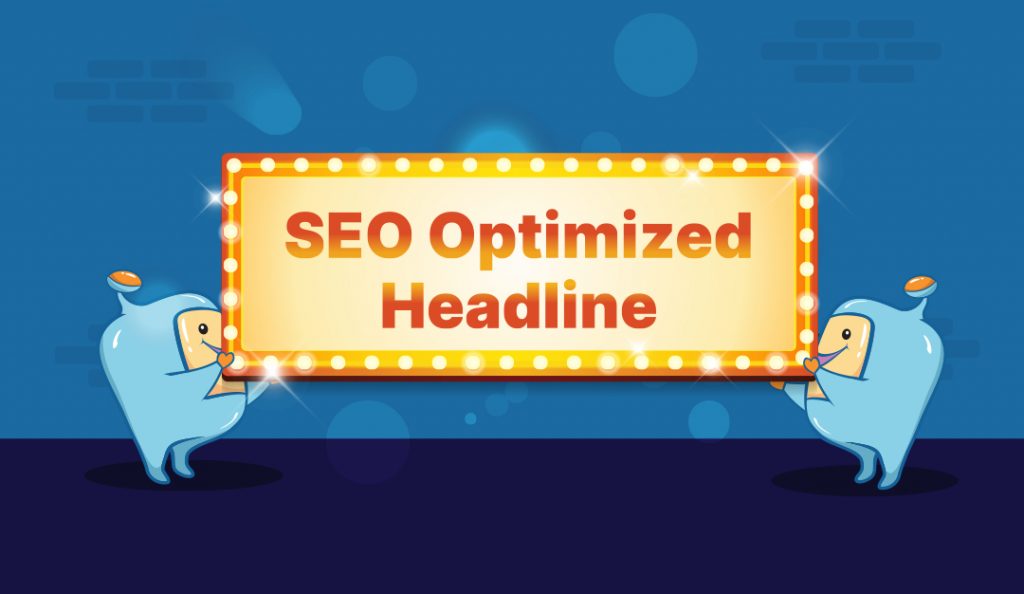
In today’s competition for attention, content marketers are always looking for any edge they can get. With the writing process for better headlines I laid out above, the content marketer now has a solid map for conceiving, drafting, testing, and measuring good headlines. This applies whether you want to create a blog headline, subject lines for email newsletters, or promotional content.
You know how to write a headline for SEO visibility and reader impact.

Here are some quick tips on how to create winning headlines.
When it comes to headlines, there is not a hard and fast rule. As discussed in this article, there are known tips when writing headlines.
Write your headlines with your readers in mind.
Make sure to use words that make your headlines stand on their own.
Use action based, interesting adjectives and power words to draw your readers in. This also works for email subject lines.
If you are into split testing, test one headline against another to see which gets more clicks. You can also test this for social sharing.
If you have a great headline, make sure your body copy in your article can convert your readers into whatever action you want them to take. The S.I.A. has a course on Conversion Rate Optimization that will help you convert visitors into sales.
